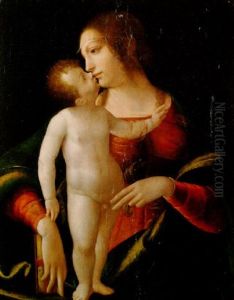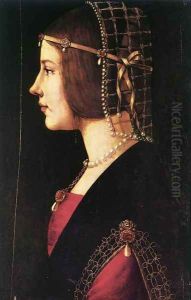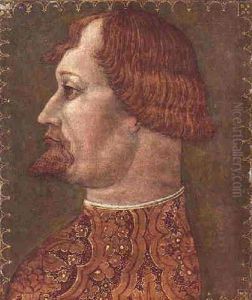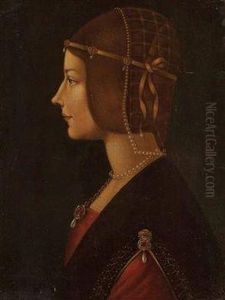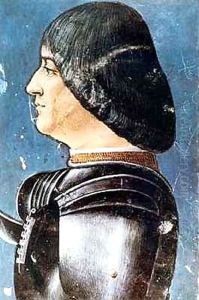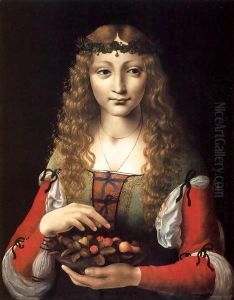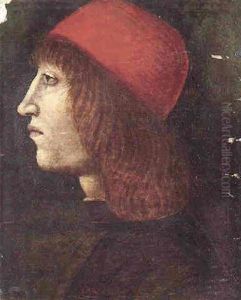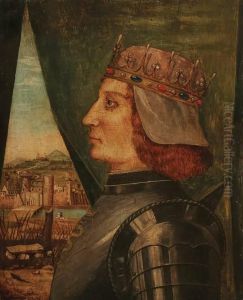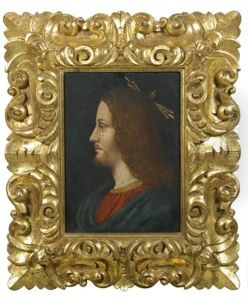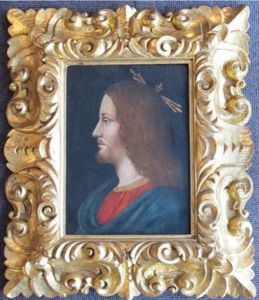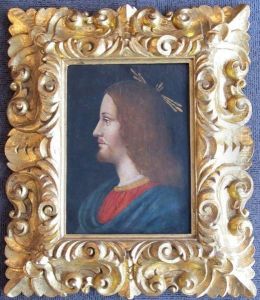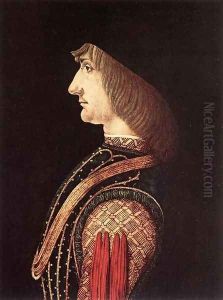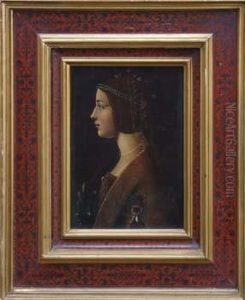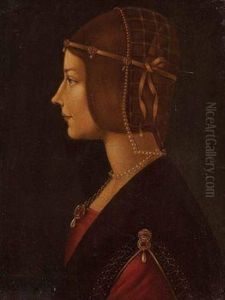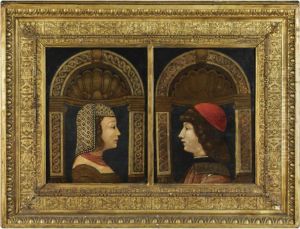Ambrogio de Predis Paintings
Ambrogio de Predis was an Italian Renaissance painter, known for his collaboration with Leonardo da Vinci and for his contributions to the Lombard painting tradition. Born in Milan around 1455, Ambrogio came from a family of artists; his brother Evangelista was also a painter, and together, they were active in the Milanese court of Ludovico il Moro, Duke of Milan.
Ambrogio de Predis is especially renowned for his work as a portraitist, displaying a nuanced understanding of color and detail that was highly regarded during his time. His collaboration with Leonardo da Vinci on the painting of the 'Virgin of the Rocks' (now located in the National Gallery, London) for the Confraternity of the Immaculate Conception in Milan, is a significant highlight of his career. This collaboration is particularly notable because it illustrates the close working relationship between de Predis and da Vinci, and how their joint efforts contributed to the masterpiece. De Predis was responsible for the execution of certain parts of the painting under da Vinci's guidance, showcasing his skill and ability to work harmoniously with one of the era's greatest artists.
In addition to his collaboration with da Vinci, Ambrogio de Predis was commissioned by the Sforza court to create various works, including individual portraits and religious scenes. His portraits are celebrated for their psychological depth and realism, attributes that were highly innovative at the time. One of his most famous works is the portrait of Emperor Maximilian I, which displays de Predis's skill in capturing both the physical and character nuances of his subjects.
Despite his achievements, details about Ambrogio de Predis's life remain somewhat obscure, and his death date is approximately placed around 1508. His legacy, however, lives on through his contributions to the Italian Renaissance, particularly in the area of portrait painting. De Predis's work is seen as a vital link in the development of the Lombard and Italian portrait traditions, bridging the gap between the early Renaissance and the High Renaissance styles.
Overall, Ambrogio de Predis's career is marked by his ability to blend the innovative techniques of the Renaissance with his own unique style, making a significant impact on the development of Italian art. His collaboration with Leonardo da Vinci, coupled with his own distinguished contributions, cements his place as a noteworthy figure in the history of Renaissance art.

